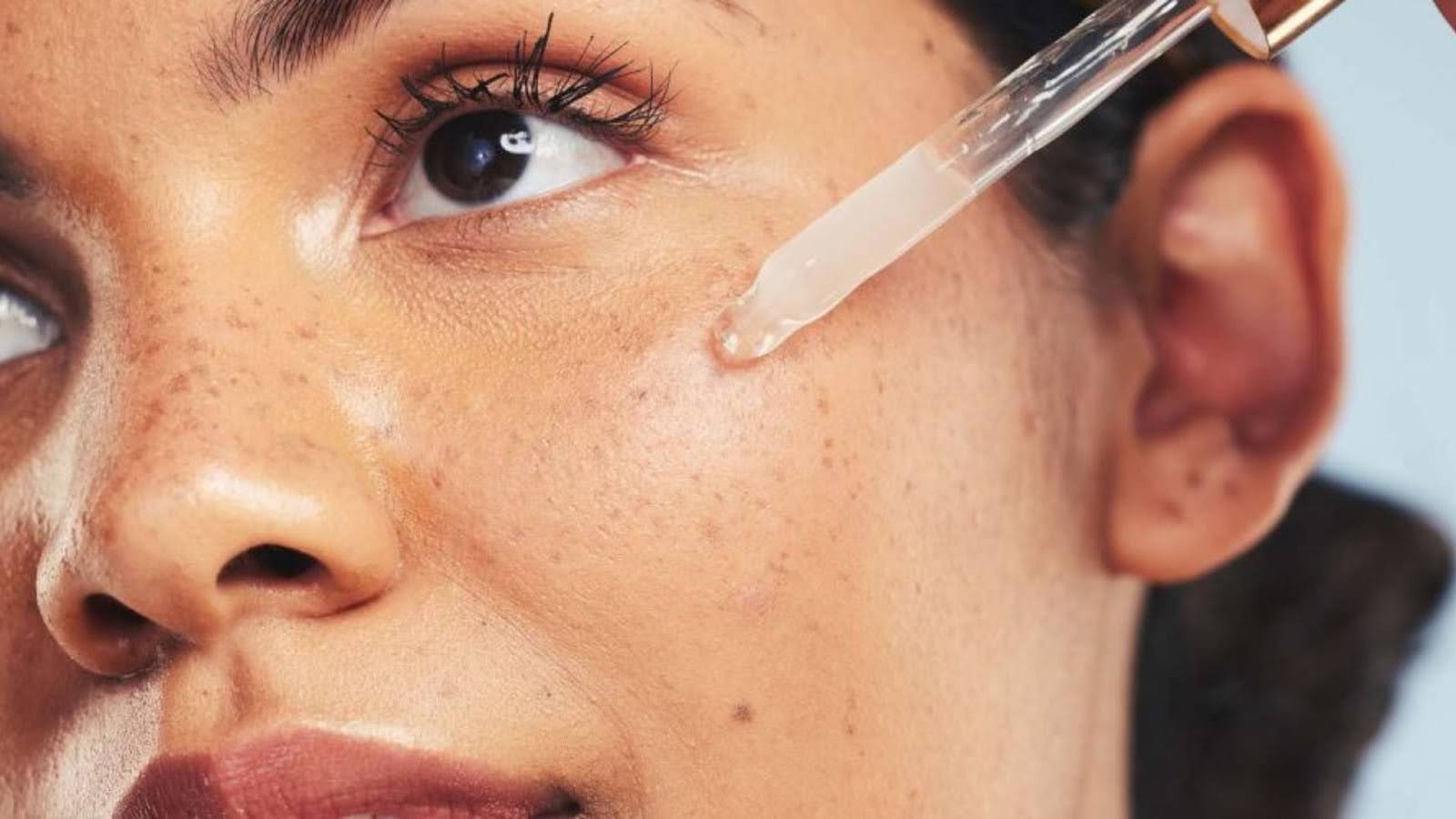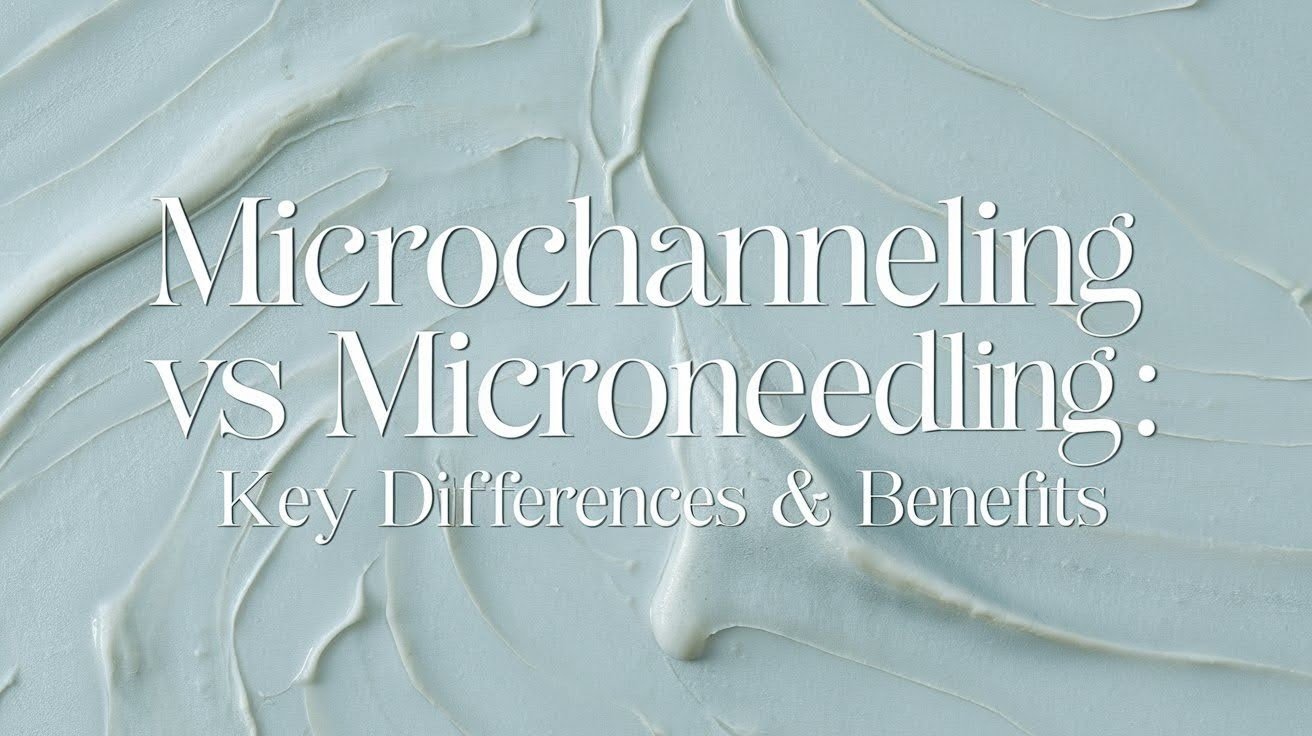Lactic Acid vs Retinol: Which Is Best for Your Skin?

Which is better for your skin, retinol or lactic acid? I understand. There are so many ingredients available in the skincare industry that it seems impossible to make a decision.
I’ll go over how retinol and lactic acid work, who should use each, and which is best for your skin type. Additionally, you will find whether you can mix them together and how to use them safely.
In order to provide you with understandable answers rather than perplexing jargon, I have spent hours researching this. Helping you choose the best ingredient for healthy, radiant skin is my straightforward mission.
Let’s determine what your skin actually requires.
What is Lactic Acid?

Lactic acid is an alpha hydroxy acid (AHA) that comes from fermented carbohydrates. This gentle ingredient works on your skin’s surface to remove dead cells that make your face look dull.
It smooths texture, brightens your complexion, and evens out tone while adding moisture and strengthening your skin barrier.
It’s perfect if you have sensitive skin that can’t handle harsh products, deal with dullness or uneven texture, or want exfoliation without irritation.
What is Retinol?

Retinol is a vitamin A derivative that belongs to the retinoid family and works deep in your skin layers. It builds collagen to reduce fine lines and wrinkles, speeds up cell turnover for smoother skin, and fades dark spots and sun damage over time.
Your pores look smaller and your skin feels firmer. It’s the ingredient with the most research behind it.
Use retinol if your skin shows signs of aging like wrinkles, fine lines, or dark spots, and you want long-term results that actually last.
Lactic Acid vs Retinol: How They Work
Different methods that create different results
|
Lactic Acid |
Retinol |
|
Where it works: Stays on top of your skin surface |
Where it works: Goes deeper into your skin layers |
|
What it does: Dissolves bonds between dead skin cells and sweeps them away |
What it does: Tells skin cells to speed up and make new ones; signals skin to produce more collagen and elastin |
|
How it’s called: Chemical exfoliation |
How it works: Converts into retinoic acid once in your skin |
|
Speed of results: You see results quickly because it works on the surface |
Speed of results: Takes longer but creates lasting change |
|
Molecular size: Larger than other acids, doesn’t penetrate as deeply |
Penetration depth: Reaches the dermis layer |
|
Best for: Sensitive skin types (less irritating) |
Best for: Deep issues like wrinkles that form in deeper skin layers |
|
When it works: Works while you sleep |
What you need: Patience for results |
How Lactic Acid Works

Lactic acid stays on top of your skin. It dissolves the bonds between dead skin cells and sweeps them away. You see results quickly because it works on the surface.
This process is called chemical exfoliation. It’s gentler than physical scrubs and works while you sleep.
The molecular size of lactic acid is larger than other acids, which means it doesn’t penetrate as deeply. This makes it less irritating for sensitive skin types.
How Retinol Works

Retinol goes deeper into your skin layers. It tells your skin cells to speed up and make new ones. It also signals your skin to produce more collagen and elastin.
This takes longer but creates lasting change. Retinol needs to convert into retinoic acid once it’s in your skin. That’s why you need to be patient.
The deeper action means it can address issues that surface treatments can’t reach, like wrinkles that form in the dermis layer.
The Key Differences
Lactic acid gives you instant gratification. You’ll notice softer, brighter skin within days. Retinol requires commitment. Changes happen gradually over weeks and months.
Lactic acid works best for surface issues like dullness and rough patches. Retinol tackles deeper concerns like wrinkles and loss of firmness.
One refreshes the top layer while the other rebuilds from within. Think of lactic acid as your quick fix and retinol as your long-term investment in skin health.
Can You Use Lactic Acid and Retinol Together?

Yes, but timing matters.
Never put both on your face the same night. Your skin will get red, dry, and angry. Instead, alternate them. Use lactic acid one night and retinol the next. This gives your skin time to recover between treatments and prevents overexfoliation.
Start slow when you’re new to either ingredient. Give your skin time to adjust. Watch for redness, peeling, or stinging. These are signs your skin needs a break. Some people can eventually use both more frequently, but most do best with the alternating schedule.
Use a good moisturizer after both ingredients. Look for ones with ceramides or hyaluronic acid to repair your skin barrier. Wear sunscreen every single day because both make your skin more sensitive to sun.
Which is Better for Your Skin?
It depends on what your skin needs right now
- Choose lactic acid if your skin gets irritated easily, you deal with dryness or dehydration, or your main concern is dull texture and uneven tone. It gives you gentle brightening with fast results and minimal downtime.
- Choose retinol if aging is your top concern and you have wrinkles, fine lines, or sagging skin. It works on dark spots, sun damage, pore refinement, and firmness. You need patience for long-term results that pay off.
- Use both for complete care by alternating nights to get exfoliation and renewal. This combo tackles multiple concerns at once when done right.
- Add hydrating serums to keep dryness away when using either ingredient. Moisture helps your skin tolerate these powerful activities better.
- Introduce them slowly and listen to your skin. Start with one ingredient, wait a few weeks, then add the second if you want to combine them.
Conclusion
My sensitive skin required a gentle approach, so I also began with lactic acid. It gave me more self-assurance before I later introduced retinol.
To be honest, there is no wrong decision here, select the solution that best suits your current top skin concern, be consistent, and always wear sunscreen! You can see what’s working on your skin.
Tell me in the comments below which of retinol and lactic acid you plan to try first. Tell me about your experience, please!
Frequently Asked Questions
Can I use lactic acid every night?
Yes, if your skin tolerates it well. Start 2-3 times per week and build up gradually. Always follow with moisturizer to prevent dryness.
How long does retinol take to show results?
You’ll notice a smoother texture in 4-6 weeks. Real anti-aging results like reduced wrinkles take 3-6 months of consistent use.
Is lactic acid safe during pregnancy?
Generally yes, but always check with your doctor first. Lactic acid is considered safer than retinol during pregnancy.
Can retinol make my skin worse at first?
Yes, this is called purging. Your skin may break out or peel for 2-4 weeks as cell turnover increases. This is normal and temporary.
Which percentage should beginners start with?
For lactic acid, start with 5-8%. For retinol, begin with 0.25-0.3%. Lower concentrations let your skin adjust without major irritation.










